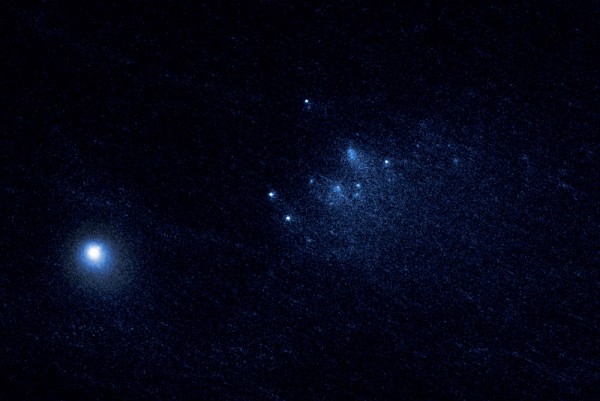By Ana Verayo, | September 18, 2016

NASA Hubble Space Telescope, Comet 332P/Ikeya-Murakami
Astronomers have captured the most detailed images of a comet getting destroyed using NASA's Hubble Space Telescope. The telescope secured sharp pictures of a self-destructing comet about 108 million kilometers away from Earth.
Like Us on Facebook
The pictures were taken in January over a period of three days. Hubble obtained images of 25 comet fragments consisting of ice and dust that were emitted by the dying comet. The particles were traveling very slowly, similar to a human's walking pace, according to David Jewitt of the University of California.
This comet, known as the 332P/Ikeya-Murakami, is estimated to be around 4.5 billion years old. Scientists stated that the spinning rotation of the comet was so fast that it spewed material into space.
This comet tail made of debris is now forming a 4,828-kilometer trail across deep space. Scientists have stated that this volatile behavior is consistent with comets when their orbits approach the sun. Fragments of the comet were apparently evaporating due to powerful cosmic forces.
Jewitt explained that comets sometimes disintegrate. However, when this happens, it often takes place quickly without any warning, leaving no time to study this phenomenon. With the help of Hubble's powerful resolution, tiny, faint pieces of the comet have now been revealed, which can be tracked day-by-day, allowing more accurate measurements ever from a comet.
Observations conducted over three days show that comet shards can brighten and then go dark due to their ice patches hitting the sunlight as they rotate very fast. These pieces can change shape too as they break apart.
In total, about four percent of the original comet, around 65 feet to 200 feet wide, disintegrated as the comet traveled at 80,467 kilometers per hour.
The overall size of the comet is around 1,600 feet across around five football fields in length, according to researchers.
This study has been published in the Astrophysical Journal Letters.
-
Use of Coronavirus Pandemic Drones Raises Privacy Concerns: Drones Spread Fear, Local Officials Say

-
Coronavirus Hampers The Delivery Of Lockheed Martin F-35 Stealth Fighters For 2020

-
Instagram Speeds Up Plans to Add Account Memorialization Feature Due to COVID-19 Deaths

-
NASA: Perseverance Plans to Bring 'Mars Rock' to Earth in 2031

-
600 Dead And 3,000 In The Hospital as Iranians Believed Drinking High-Concentrations of Alcohol Can Cure The Coronavirus

-
600 Dead And 3,000 In The Hospital as Iranians Believed Drinking High-Concentrations of Alcohol Can Cure The Coronavirus

-
COVID-19: Doctors, Nurses Use Virtual Reality to Learn New Skills in Treating Coronavirus Patients








